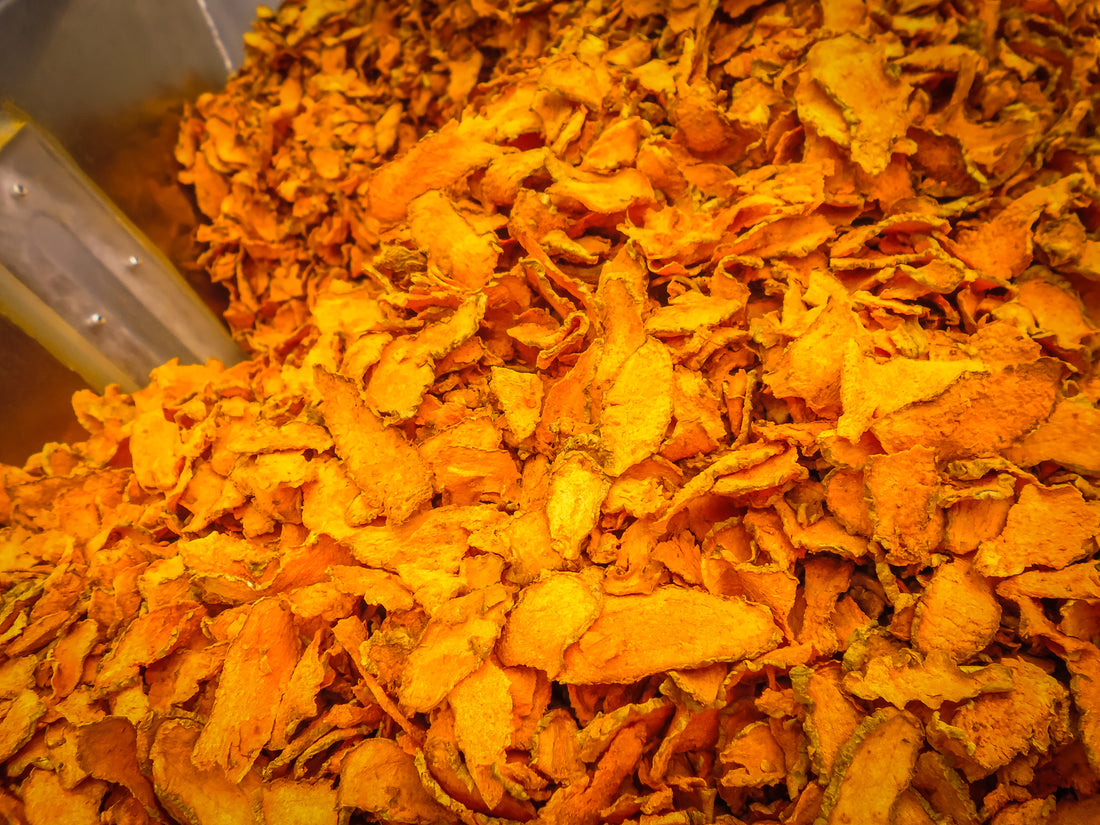Turmeric rhizome was adopted as a medicinal product by the Committee on Herbal Medicinal Products (HMPC) on November 12, 2009. This plant has been used in many traditional medicine systems (Chinese, Hindu and Ayurvedic) to relieve digestive problems, as an anti-inflammatory and in topical use for its healing capacity (BLUMENTHAL et al., 2000; TAYLOR and LEONARD, 2011). Those responsible for the bioactivity of turmeric are curcuminoids, especially curcumin, a phenolic compound of secondary metabolism explained later (WITKIN and LI, 2013).
There are different preparations of this medicinal plant. The rhizome can be taken in powder or crushed in infusion, for external use tinctures are made using 70% ethanol as a solvent, or dry extracts extracted with 96% ethanol can be made.
Curcumin has several scientifically proven medicinal effects, such as the reduction of inflammation in arthritis, prevention of arteriosclerosis, hepatoprotective effects, respiratory and gastrointestinal disorders, skin conditions such as psoriasis or eczema, cancer prevention and antioxidant capacity (VISTEL VIGO et al. al., 2003).
It has traditionally been used to support liver function and treat jaundice, in both Ayurvedic and Chinese medicine. Turmeric increases glutathione content and its glutathione-s-transferase activity in the liver. These substances are key protectors against the damaging effects of toxins and free radicals. Curcumin is a powerful antioxidant that influences the expression of enzymes related to redox processes, such as glutathione synthase (GTS) or cytochrome P450 oxidase (CYP-450), capable of neutralizing reactive oxygen species. (GRYNKIEWICZ and SLIFIRSKI, 2012; WITKIN and LI, 2013).
Curcumin is capable of relieving inflammatory problems related to multiple sclerosis, rheumatoid arthritis and psoriasis by modulating the signal of cytokines, a type of pro-inflammatory molecules. This anti-inflammatory capacity is partly due to its ability to inhibit the synthesis of inflammatory prostaglandins (WITKIN and LI, 2013).
A study with 45 patients suffering from rheumatoid arthritis, a treatment with doses of 500 mg per day of curcumin significantly reduced their inflammatory levels without causing adverse effects (CHANDRAM and GOEL, 2012).
It also has anti-cancer effects, is capable of reducing tumor growth and modulating secondary problems associated with cancer such as fatigue, depression or insomnia (WITKIN and LI, 2013). Curcumin directly and indirectly inhibits cyclooxygenase-2 (COX-2), a crucial protein in the inflammation cascade and has been linked to certain cancers. In cancer cells, curcumin shows an anti-inflammatory capacity and a reduction in cell growth by inhibiting the expression of Interleukins IL-1 ß, IL-6 and tumor necrosis factor-α (TNF-α) (TAYLOR and LEONARD, 2011).
Curcumin has a powerful antimicrobial action, inhibiting the growth of pathogenic bacteria, viruses and fungi (including Candida albicans, Candida kruseii and Candida parasilosis).
Curcumin has a primary role in gastrointestinal protection: it has been seen to inhibit the activation of several transcription factors that play a key role in intestinal inflammation, such as nuclear factor Kappa-ß (NFk ß) or ß -catechins (TAYLOR and LEONARD, 2011). It has been used since ancient times against gastritis or heartburn since it helps increase the production of mucosa and protects the walls of the stomach. It also stimulates bile flow to the intestine, which improves the digestion of dietary fats.
It has also been shown that curcumin can prevent the accumulation of beta-amyloid plaques, which is correlated with Alzheimer's disease (WITKIN and Reduca (Biology). Botanical Series.7 (2): 84-99, 2014.ISSN: 1989 -3620 89 LI, 2013).
In vivo studies show the ability of curcumin to reduce stress, improve irritability and anxiety, modulate depression and neurotransmission mechanisms by modifying cellular signal (HISHIKAWA et al., 2012; WITKIN and LI, 2013).
The problem with this secondary metabolite is its low bioavailability. Animal studies have shown that curcumin is rapidly metabolized, conjugated in the liver and excreted in feces, therefore having a limitation in its bioavailability (DULBECCO and SAVARINO, 2013; GRYNKIEWICZ and SLIFIRSKI, 2012). Therefore, it is necessary to conjugate curcumin with other compounds such as phospholipids, which improve its absorption and therefore, its bioavailability and activity (WITKIN and LI, 2013).
Complete article in DOCTA Magazine, Complutense University of Madrid, at the following email address: https://dotta.ucm.es/entities/publication/fe4b9b98-d73e-4332-a1eb-7a32ec33dc68

